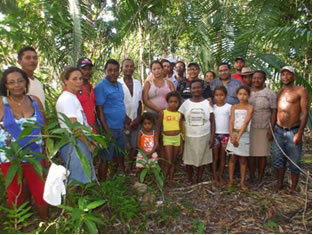Maranhão is located in the Northeast region of Brazil. It borders the states of Pará (to the west), Tocantins (to the southwest), Piauí (to the east), besides being bathed by the Atlantic Ocean (to the north). Its territorial extension is 331,935,507 square kilometers, occupying 3.9% of the national territory.
The state is divided into 217 municipalities and according to the population count carried out in 2010 by the Brazilian Institute of Geography and Statistics (IBGE), totals 6,574,789 inhabitants, considered the fourth most populous state in the North East. Demographic growth is 1.5% per year and population density is 19.8 inhabitants per square kilometer.
The territory comprising Maranhão was occupied by indigenous communities. Later, during Brazilian colonization, the state was disputed by the French, Portuguese and Dutch. In addition to the Indians and European settlers, the population of Maranhão has strong elements of Africans, who were brought in to carry out slave labor.
The population of Maranhão is one of the most mixed in Brazil, according to the IBGE, 68% of the inhabitants are brown, the result of a mixture of different ethnic compositions. Most of the state population is made up of Afro-descendants, a consequence of the intense flow of slave trade between the 18th and 19th centuries. Currently, Maranhão has more than 700 quilombola communities, being, therefore, the state that has the largest number of remnant communities of quilombos in Brazil.

Quilombola Community in Maranhão
São Luís, capital of Maranhão, with 1,014,837 inhabitants is the city with the highest population concentration in the state, considered as the national capital of Reggae. Other populous cities in Maranhão are: Imperatriz (247,505), São José de Ribamar (163.045), Timon (155.460), Caxias (155.129), Codó (118.038), Paço do Lumiar (105.121), Açailândia (104.047).
Maranhão presents great cultural diversity, having as its main popular manifestation, the bumba meu boi festival. Another element that also looks like this is the Creole drum.
With serious socioeconomic problems, since approximately 19% of the population is illiterate, Maranhão is the penultimate placed in the national ranking of the Human Development Index (HDI), with an average of 0.683, superior only to that of Alagoas (0,677). The infant mortality rate is high (36.5 deaths per thousand live births) and life expectancy is 67 years.
By Wagner de Cerqueira and Francisco
Graduated in Geography
Brazil School Team
Maranhão - Northeast region - geography of Brazil - Brazil School
Source: Brazil School - https://brasilescola.uol.com.br/brasil/aspectos-populacao-maranhao.htm


